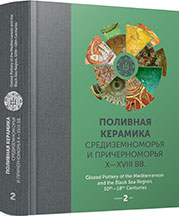Поливная керамика средневекового города Шамкир
Glazed Ceramics of Medieval Shamkir City
Author(s): Tarix Meyrut Dostiyev
Subject(s): History, Archaeology, Cultural history, Middle Ages, 6th to 12th Centuries
Published by: Издательский дом Stratum, Университет «Высшая антропологическая школа»
Keywords: Azerbaijan; Shamkir; Middle Ages; glazed ceramics; ornament; artistic culture
Summary/Abstract: This article focuses on the red-clay glazed ceramics of medieval Shamkir city, the ruins of which are located in the western region of the Republic of Azerbaijan, on the left bank of the river Shamkirchay. Wheel-made glazed ceramics of Shamkir is manufactured from well-prepared high quality levigated clay and is evenly baked. Main decoration techniques applied on glazed ceramics in 8th — 10th centuries were the color of baked shard, engobe, manganese and copper oxyde and glaze. Painting with engobe colors prevailed. The second stage in the development of artistic ceramics of Shamkir, encompassing 11th — beginning of the 13th century, was characterized by some innovations in decoration technology. The products that were decorated with engraving, the reserved technique, manganese and white painted engobe coating, engraving on manganese paintings, polychrome products under the glaze were widely used. The decor is dominated by geometric patterns, rarer plant, epigraphic and figurative motifs. Widespread rise of pottery production which began in the 9th century continuously evolved and reached its apogee in the 12th century.
Book: Поливная керамика Средиземноморья и Причерноморья X—XVIII вв.
- Page Range: 639-674
- Page Count: 36
- Publication Year: 2017
- Language: Russian
- Content File-PDF

